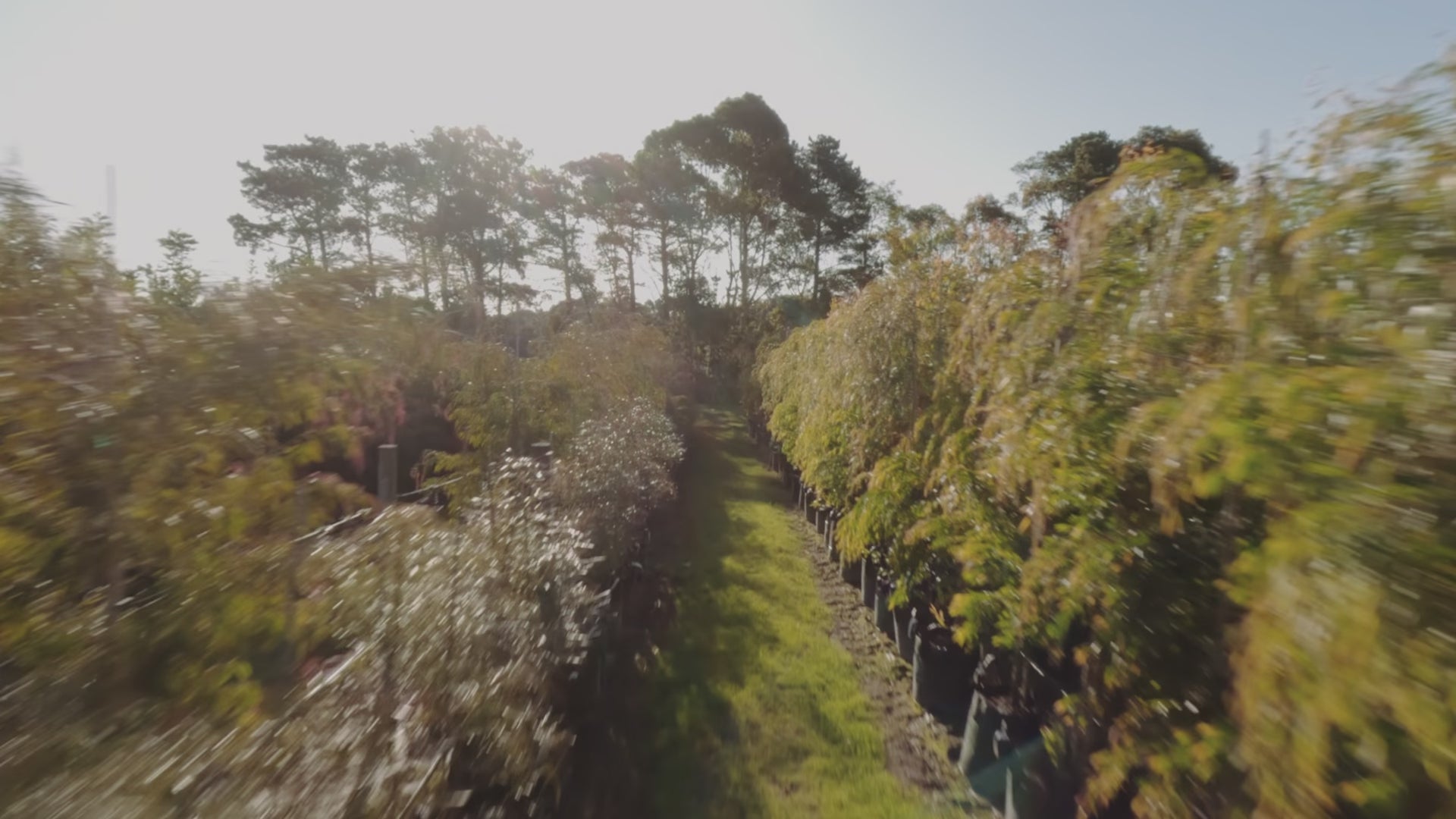Olea europaea 'Kalamata' - Olive
Olea europaea 'Kalamata' - Olive
9999 in stock
Couldn't load pickup availability
Current Stock Height Guides
Current Stock Height Guides
Trade Customers
Trade Customers
We supply advanced trees to landscapers, developers, architects, and councils Australia-wide. Trade clients receive fast quotes, expert advice, and access to premium stock with reliable freight.
Share this product
About Olea europaea 'Kalamata' - Olive
Olea europaea 'Kalamata' is a well-known Greek olive variety valued for its large, almond-shaped fruit with rich flavour and firm texture. Commonly used for pickling or pressed for oil, it’s a versatile option for both culinary and ornamental purposes.
This evergreen tree reaches 4–6 metres in height and develops a spreading, open canopy that responds well to pruning. The silver-green foliage adds year-round interest, while small creamy-white flowers in spring support consistent fruiting. It makes an excellent feature tree and suits formal or informal landscape styles.
‘Kalamata’ thrives in full sun and well-drained soils, showing good drought tolerance once established. It can be shaped to suit a range of garden settings—from productive orchards to pots and patios. While it is self-fertile, planting with a pollinator can improve yields.
Key Information to Know

Evergreen / Deciduous
Olea europaea 'Kalamata' - Olive is an Evergreen (foliage year round) Tree

Mature Height & Width
Mature Height: 5m - 10m Approximately
Mature Width: 3 – 4 meters
Olea europaea 'Kalamata' - Olive is expected to grow Approx. 30 – 60 cm per year.

Frost Tolerance
Is Olea europaea 'Kalamata' - Olive frost tolerant?
Olea europaea 'Kalamata' - Olive is Frost Tolerant – Can handle light to moderate frost once established.

Flowering Information
Olea europaea ‘Kalamata’ produces clusters of small, creamy-white, lightly fragrant flowers in late spring to early summer. These subtle blooms sit quietly among the grey-green foliage and are followed by elongated, deep purple-black olives, giving a classic Mediterranean seasonal display.

Native Information
Is Olea europaea 'Kalamata' - Olive an Australian Native? No
Olea europaea 'Kalamata' - Olive is Native to The Mediterranean basin, particularly southern Greece, where the Kalamata olive has been grown for centuries.

Wildlife Value
Its nectar-bearing flowers attract bees and beneficial pollinating insects, while the ripening olives provide a valuable seasonal food source for birds. The branching canopy also offers perching and light shelter, contributing modest biodiversity support in urban, coastal and Mediterranean gardens.

Sunlight Information
Olea europaea 'Kalamata' - Olive will thrive best in:

Preffered Soil
Olea europaea ‘Kalamata’ performs best in well-drained sandy or loam soils and prefers neutral to slightly alkaline conditions, though it will tolerate mildly acidic soil. It may struggle in heavy clay or waterlogged positions unless improved with coarse material and organic matter to enhance drainage. Keep soil evenly moist during establishment, then transition to deep, infrequent watering as the tree matures to support drought resilience, strong evergreen growth and consistent olive production.
Botanical Information

Botanical Information
Botanical Information
Common Name: Kalamata Olive Tree
Genus: Olea
Botanical Species: europaea
Family: Oleaceae
Botanical Name: Olea europaea 'Kalamata'
Landscape Uses
Landscape Uses
Olea europaea 'Kalamata' - Olive works in an:
Planting, Spacing & Care
Planting, Spacing & Care
-
-
-
-
Olea europaea 'Kalamata' - Olive is expected to grow Approx. 30 – 60 cm per year.
Root Ball Dimensions (Width × Depth) For Planting
Root Ball Dimensions (Width × Depth) For Planting
Use this as a reference when digging your planting hole. We recommend digging at least 10% wider than the dimensions below to encourage strong root development.
- 30cm Pot: 33cm (W) × 30cm (D)
- 40cm/45L Pot: 44cm (W) × 41.5cm (D)
- 50cm Pot / 70L Pot: 55cm (W) × 41.8cm (D)
- 100L Bag: 50.6cm (W) × 52.8cm (D)
- 150L Bag: 66cm (W) × 55cm (D)
- 200L Bag: 71.5cm (W) × 60.5cm (D)
- 300L Bag: 88cm (W) × 63.8cm (D)
- 400L Bag: 99cm (W) × 66cm (D)
- 500L Bag: 122cm (W) × 66cm (D)
- 750L Bag: 134cm (W) × 69cm (D)
- 1000L Bag: 146.3cm (W) × 71.5cm (D)
- 2000L Bag: 176cm (W) × 82.5cm (D)
Ideal Conditions
Ideal Conditions
Thrives in
Frost Tolerance
Frost Tolerant – Can handle light to moderate frost once established.
Drought Tolerance
As a young tree it requires regular watering, but once established ‘Kalamata’ develops excellent drought tolerance. Naturally adapted to hot, dry conditions, it maintains healthy evergreen growth and consistent fruiting with only occasional deep watering during extended dry periods.
Flowering Information
Flowering Information
Does Olea europaea 'Kalamata' - Olive flower?
Flowering Period:
Flower Type:
Flower Colour:
White
Olea europaea ‘Kalamata’ produces clusters of small, creamy-white, lightly fragrant flowers in late spring to early summer. These subtle blooms sit quietly among the grey-green foliage and are followed by elongated, deep purple-black olives, giving a classic Mediterranean seasonal display.
Frequently Asked Questions
Frequently Asked Questions

We have been featured in












































